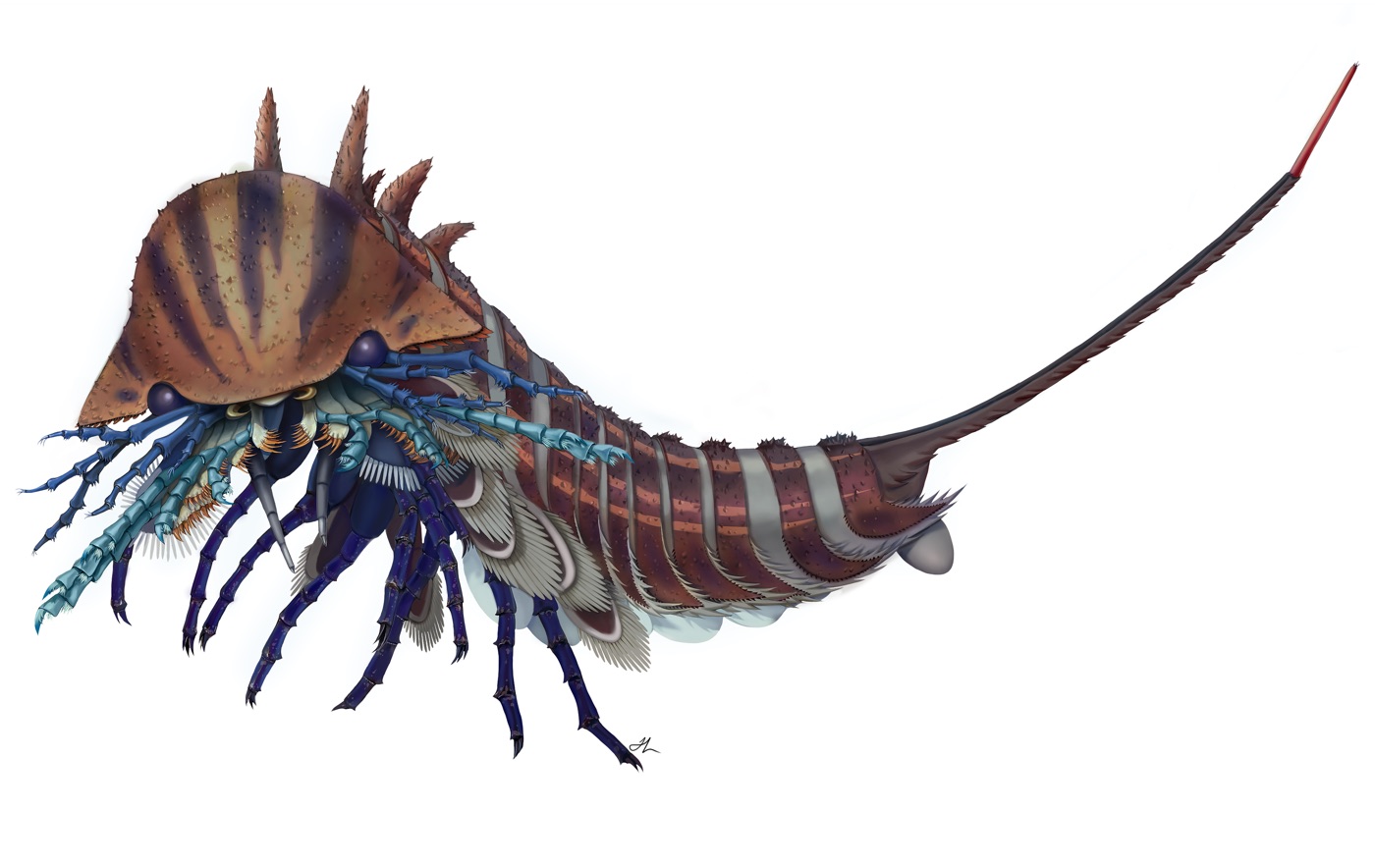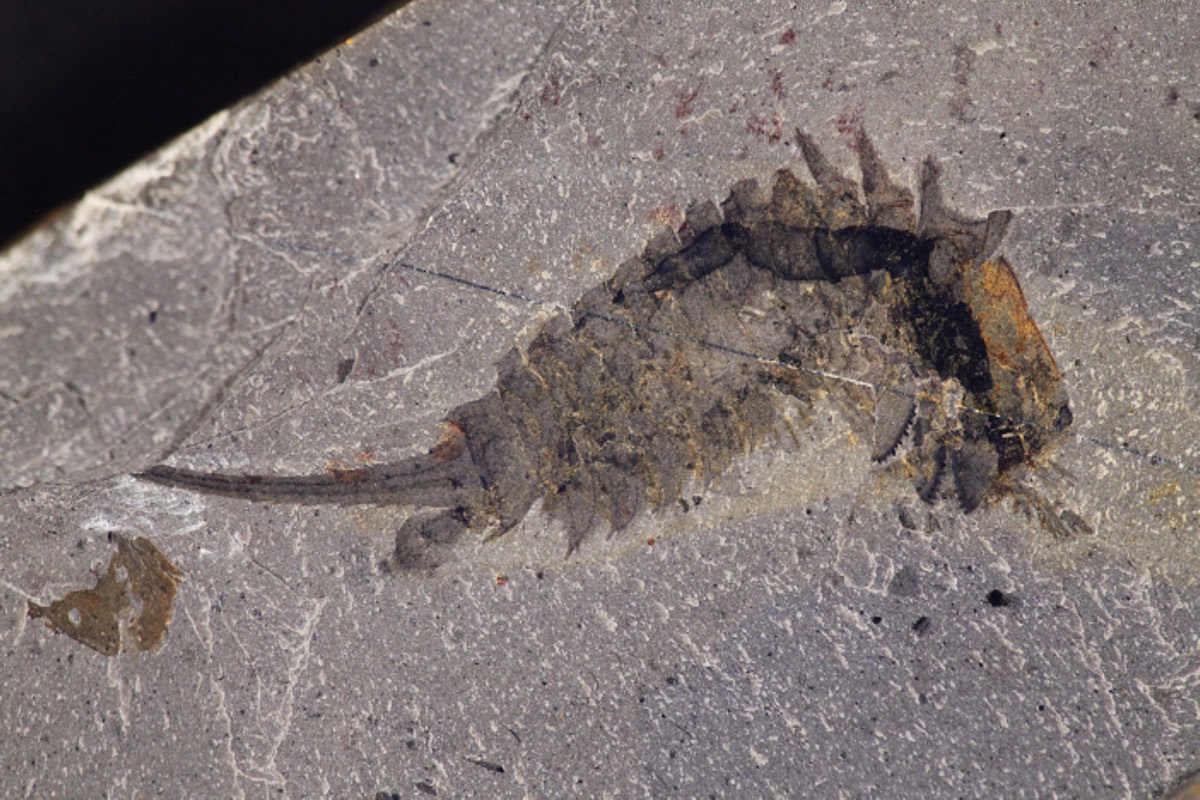This Tiny Sea Monster Had Creepy Mouth Appendages

When Habelia optata first skittered into public consciousness more than a century ago, scientists didn't know what to make of it. The long-extinct sea predator, which flourished during the middle Cambrian period about 508 million years ago, measured less than a inch long, yet it wasn't an animal you'd be keen to encounter.
The marine creature sported an extensive tail, jointed limbs and a peculiar, helmet-like head that housed several pairs of appendages for feeling, grasping and pulverizing prey — even those with hard carapaces, like trilobites — said researchers of a new study that aimed to figure out where on its family tree this little sea monster belonged. [Cambrian Creatures Gallery: Photos of Primitive Sea Life]
Spines festooned its armored body, which was divided into three main segments. There was that menacing mug, of course. Its thorax sprouted five pairs of walking legs; its post-thorax sported a set of rounded appendages that may have helped with gas exchange during respiration, the researchers noted.
"This complex apparatus of appendages and jaws made Habelia an exceptionally fierce predator for its size," Cédric Aria, a recent graduate of the Ph.D. program in the department of ecology and evolutionary biology at the University of Toronto, said in a statement. "It was likely both very mobile and efficient in tearing apart its preys," Aria said.

Aria worked with Jean-Bernard Caron, senior curator of invertebrate paleontology at the Royal Ontario Museum and an associate professor in the departments of ecology and evolutionary biology and Earth sciences at the University of Toronto, to analyze 41 specimens of H. optata, most of which were newly acquired from the Burgess Shale, a fossil field in British Columbia.
Their findings were published online Dec. 21 in the journal BMC Evolutionary Biology.
Although early fossil analyses made it clear that H. optata was an arthropod — a group of invertebrates that today includes crabs, spiders and insects — its specific subgroup was less obvious. Past studies, for instance, had linked the creature with the so-called mandibulates (like centipedes, millipedes and ants). They possess antennae and specialized appendages — called mandibles — which they use to crush food.
Sign up for the Live Science daily newsletter now
Get the world’s most fascinating discoveries delivered straight to your inbox.
Aria and Caron's research suggests, however, that the tiny sea monster was instead a close relative of the ancestor of chelicerates, which is the other subgroup of extant arthropods. Chelicerata are named for the presence of chelicerae, a set of food-cutting appendages that H. optata likewise retained in its day. Current chelicerates include horseshoe crabs, sea spiders, scorpions and spiders. [See Images of Another Bizarre Cambrian Creature]
Restoring H. optata to its proper place in the taxonomic record allows researchers to answer some long-standing questions, Aria said.
"Habelia now shows, in great detail, the body architecture from which chelicerates emerged," Aria said in the statement. "We can now explain why, for instance, horseshoe crabs have a reduced pair of limbs — the chilaria — at the back of their heads. Those are relics of fully formed appendages, as chelicerates seem to originally have had heads with no less than seven pairs of limbs."
But even among its ilk, H. optata remains uniquely odd.
"Scorpions and the now-extinct sea scorpions are also chelicerates with bodies divided into three distinct regions," Aria explained. "We think that these regions broadly correspond to those of Habelia. But a major difference is that scorpions and sea scorpions, like all chelicerates, literally 'walk on their heads,' while Habelia still had walking appendages in its thorax."
Original article on Live Science.









